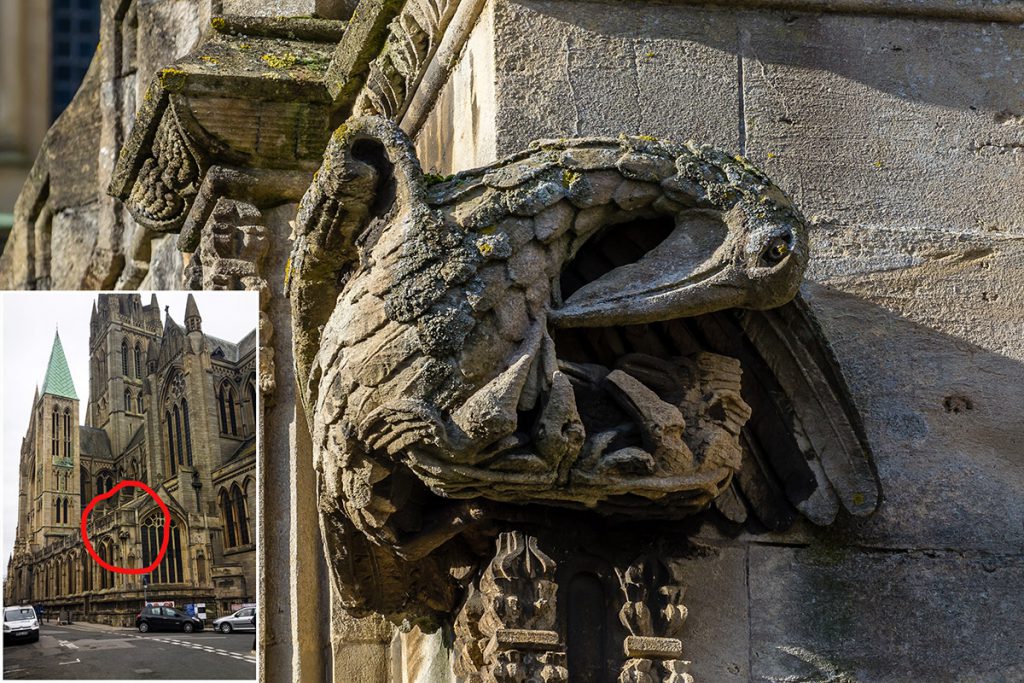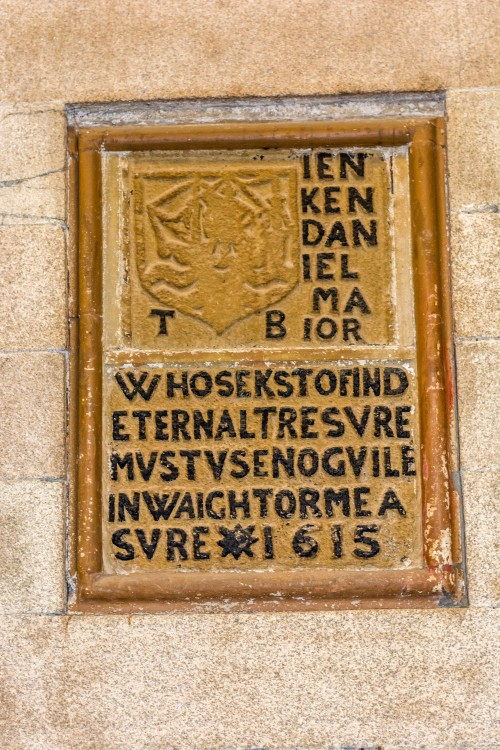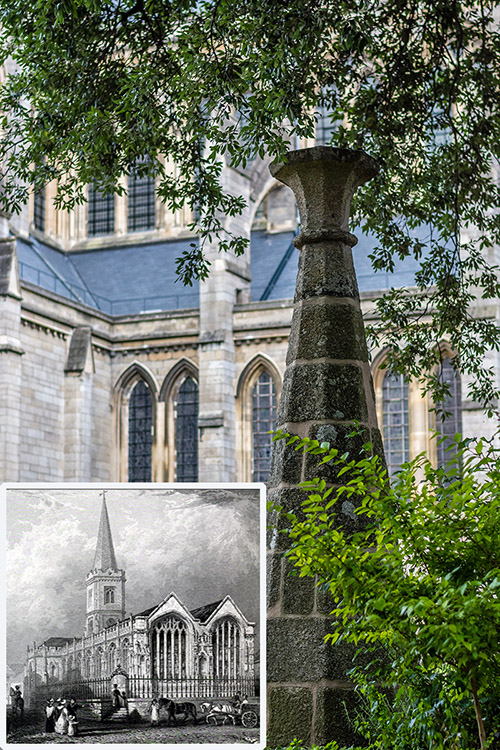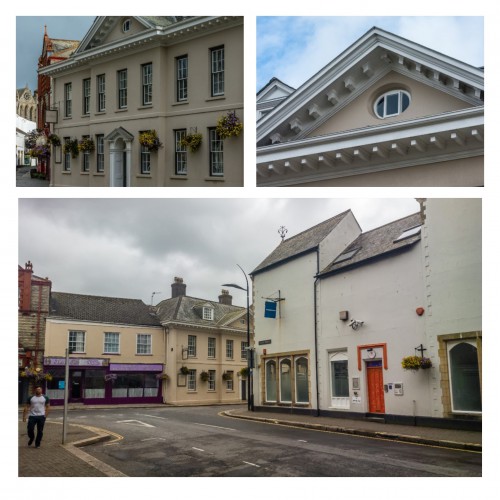As we make our way around our lovely city, most of us are aware of the major sights of interest but pay little attention to the seemingly less significant traces of the past that stand all around us. But, in their way, they tell us far more about the history of the Truro and its people.
The Pelican on the Cathedral
Did you know that that Pelican was carved in the summer of 1895 by Luscombe & Co of Sidwell Street, Exeter and placed on the corner of the old St Mary’s Aisle as a memorial to James Bubb.
He was a Londoner and he was the first Clerk Of Works for the building of the Cathedral. James was a most devout and remarkable man who had been apprenticed to John Loughborough Pearson since the age of twenty. He came to Truro at the age of 37 to devote the rest of his life in bringing to perfection the ideas of his mentor.
He was responsible for acquiring the land and all the preparation work for the building of the cathedral. Bubb sometimes worked as much as 19 hours a day and he had to contend with his employer’s demands, the interference of the local committee, the site conditions and some recalcitrant employees – a pretty tough lot in those days. In addition his health was deteriorating. He was in sole charge of the work until December 1881, when the first contractor was appointed and he was so pressurised that the two holes for the bases of the foundation stones were dug and filled with concrete only a few days before the formal ceremony took place.
On Thursday May 20th 1880 – the official ceremony of the laying of the foundation stones took place and James Bubb now took over the church and just 4 months later it was closed. Hoardings were placed around the site and the foundations were excavated.
Two years after he arrived in Truro ill health and his hard unstinting work finally broke Bubb. He had done so much in his job as Clerk of Works that he had worn himself out and then contracted typhoid. He died on May 17th 1882 aged 39. He had received praise from all quarters including from the Prince, as His Royal Highness phrased it ‘From one mason to another’.
The plaque in the City Hall
Did you know that the plaque in the City Hall was originally in the old Market House. This was situated at one end of a Middle Row which separated Market Street and Fore Street.
Middle Row was composed of wooden buildings occupied by tradesmen – coopers and saddlers. The Market House was on the ground floor with the Town Hall on the upper floor. At the opposite end of Middle Row was a prison.
Middle Row was removed in the 1790’s but the Town Hall and Market House remained until an alternative site could be found. It was eventually removed in about 1807/10.
The plaque was taken to the new market hall in Boscawen Street which was eventually rebuilt as the City Hall in the mid nineteenth century.
The Daniell’s (or Daniel) were a large family – seven sons. Jenkin (or Jenken) was apprenticed to a local merchant and eventually became a merchant and draper in Truro. In 1614 he became Mayor of Truro.
Jenkin Daniel’s name is recorded on the plaque with the following message –which he hoped would encourage honesty in trading in the market.
‘Who seks to find eternal treasvre mvst vse no gvile in waight or measvre’
‘Who seeks to find eternal treasure must use no guile in weight or measure’
Acknowledgements:Diana Smith
The Original Spire of St Mary’s Church
The south (St Mary’s) aisle of Truro Cathedral is a recreated part of St Mary’s Church (the original Truro Church), which previously occupied the site. Its spire made St Mary’s uncommon amongst Cornish churches. It was a C18th addition to the C16th church (using stone from the quarry at Moresk Gardens by permission of the Arunel Estate) rebuilt on the site of the C13th church consecrated by Bishop Bronescombe in 1259.
In about 1911 Bishop Stubbs removed the demolished remains of the upper section of the spire to Lis Escop (now Epiphany House), the former rectory of Kenwyn Church. The mushroom-shaped cap was used to provide the base of a sundial whilst the conical remainder was positioned outside the wall, on the verge of Kenwyn Church Road. The sale of the former Diocesan Offices prompted concern about the listed spire. This was resolved by gaining the consent of St Mary’s Parochial Church Council to relocate it in the grounds of the Cathedral.
It is very rare to move a listed structure and Scott & Co, conservation consultants to the Cathedral, did well to persuade English Heritage to agree. Thanks to them and to the mason responsible for the actual removal, Reuben Marsh, the spire now forms a distinctive and very appropriate landmark, not just in the garden-scape, but as part of the historical narrative of the church in Truro.
The Fighting Cocks
Here stood the Fighting Cocks Inn, here Richard and John Lander heard tales of seafarers in their father’s business. Fighting Cocks by name and by trade – in the back yard, which was visible from the gable porthole specially commissioned by banker and international shipping merchant, Samuel Enys, much cock-fighting and gambling occurred. If Enys spied from his perch one of his indebted customers winning a cockfight he’d be down over the stairs and into that yard faster than a sparrowhawk, hand outheld and payment required!
The Fighting Cocks gave way to gentler businesses and eventually to the Dolphin Buttery. It was thought to be the oldest building in Truro. It was pulled down in the 1960s when the City Fathers and Cornwall Council re-engineered the street network to provide a platform for accommodating modern retailing and motor traffic.








